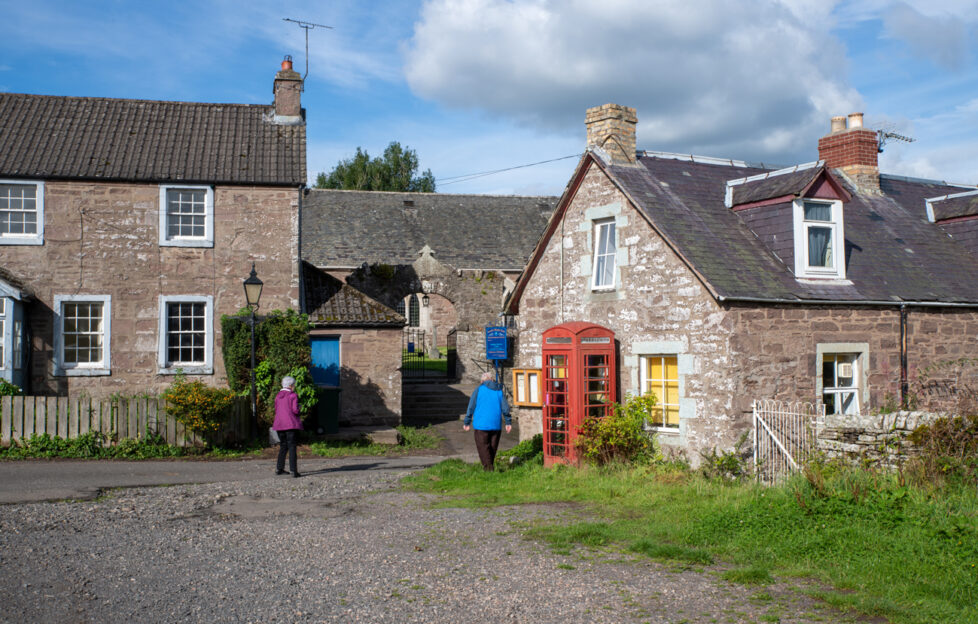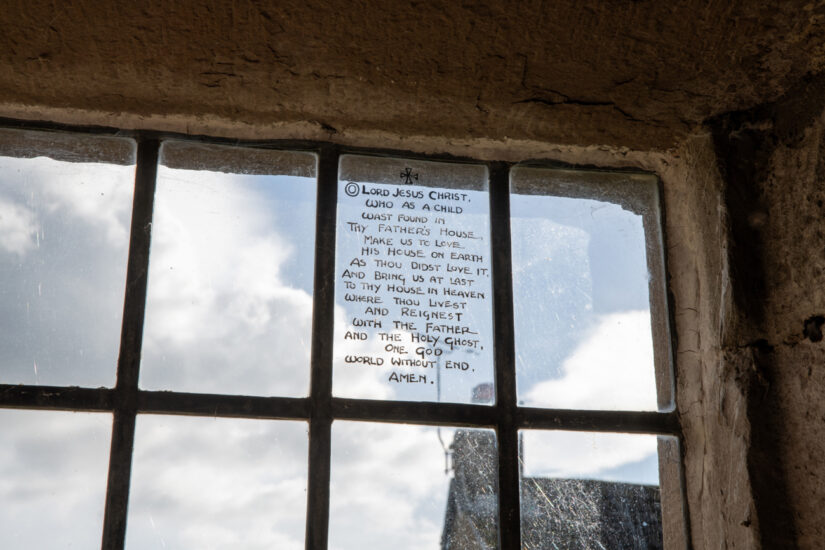Willie’s View: In Fowlis Wester

Willie discovers another overlooked gem of a village in Fowlis Wester.
The tiny village of Fowlis Wester enjoys an elevated site around five miles east of Crieff. It’s a lovely peaceful place to stop and stretch the legs.
Long before the invention of motor vehicles it used to sit on the main Perth Road. Today the road passes well out of earshot and the place sees only those prepared to stray from the beaten track.
The Heart of the Village

Fowlis Wester Kirk.
In the centre of the village is its picturesque old kirk. They say its site was chosen by the Earl of Strathearn as, after climbing a nearby rise, this was the first spot touched by the morning rays of the sun. The kirk has more than a few interesting curiosities including a ‘leper’s squint’. It’s a wee hole in the wall where lepers could join the service from outside. All without coming into contact with the rest of the congregation.
The Window Prayer
You’ll find too, the original of the village Pictish Stone as well as a prayer etched onto one of the small window panes.

Above the stepped entrance to the kirkyard is a lintel inscribed, ‘Tak heed to thy foot when thou entrest into the hows of God.’ The original lintel is also inside the kirk.
This stone carried more than its written warning. It was also subject of a prophesy by the seer, Thomas the Rhymer. He warned that when an ash tree took root in the wall and grew large enough to carry a swallow’s nest, the kirk would be surrounded by troopers. That indeed came true.
During the French Wars, Sir Patrick Murray, arriving with his troopers, was keen to enlist as many local men as he could and tried to find them through the kirk register. Ah, but the women beat him to it and hid the book. They had a far better use for their men folk than fighting!
Thomas also predicted that when the ash tree was strong enough to carry a crow’s nest, the kirk would be surrounded by cannon. That part of the prophesy looks less likely to happen now, though. The wee ash tree was removed long ago to prevent damage to the masonry.
![]()
Nobody knows Scotland like our Willie. Read more of his blogs from across the country .










